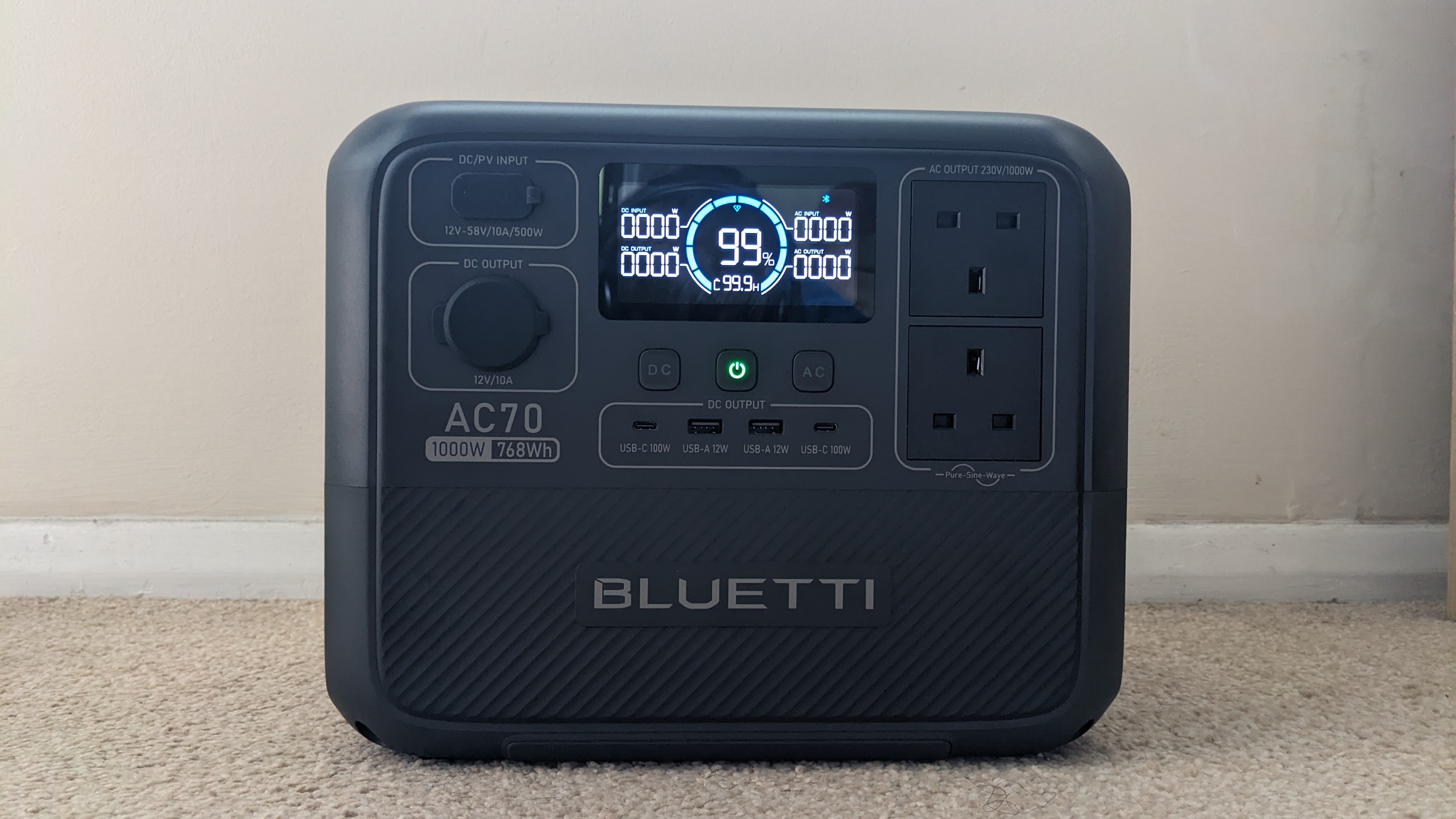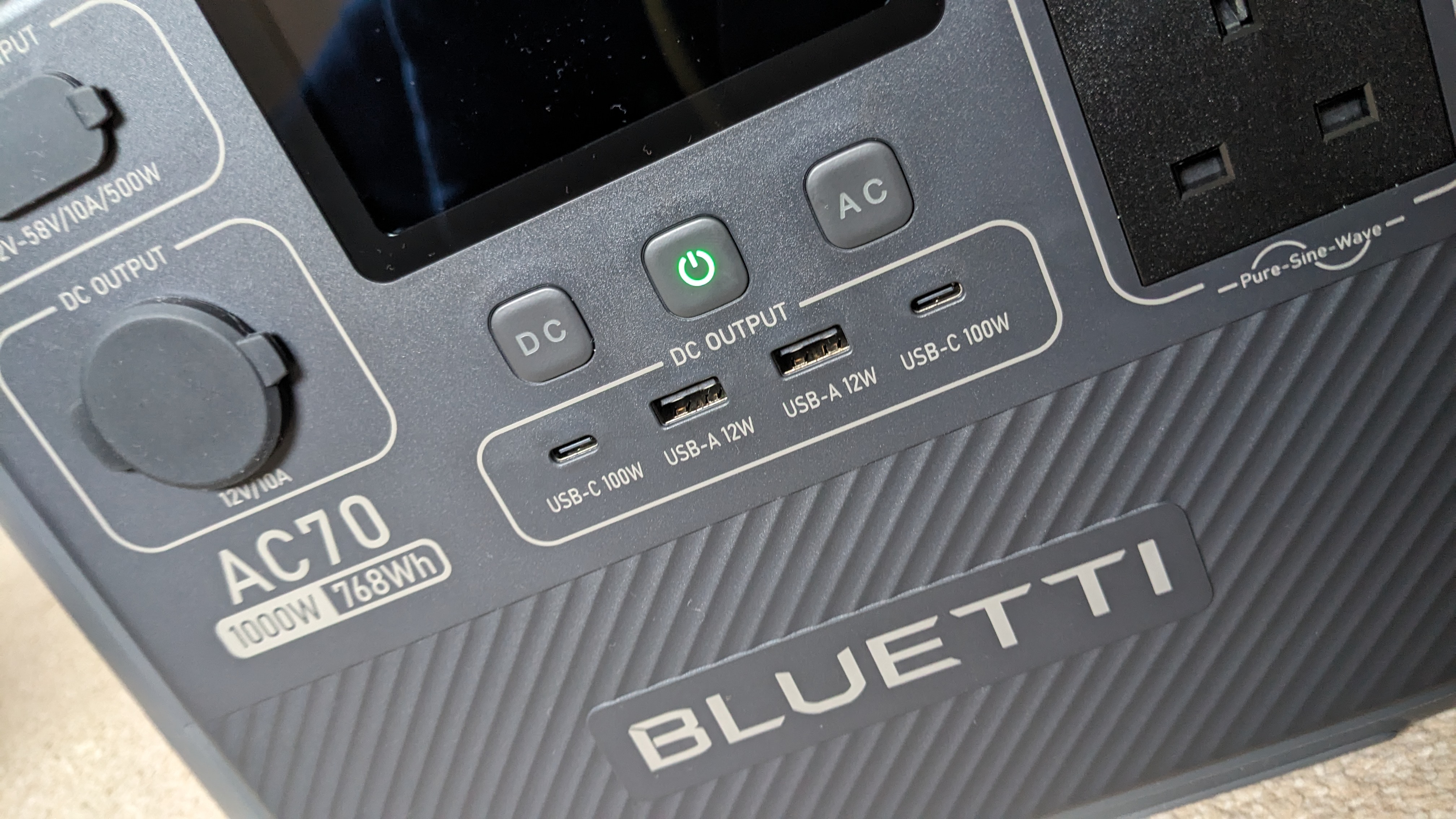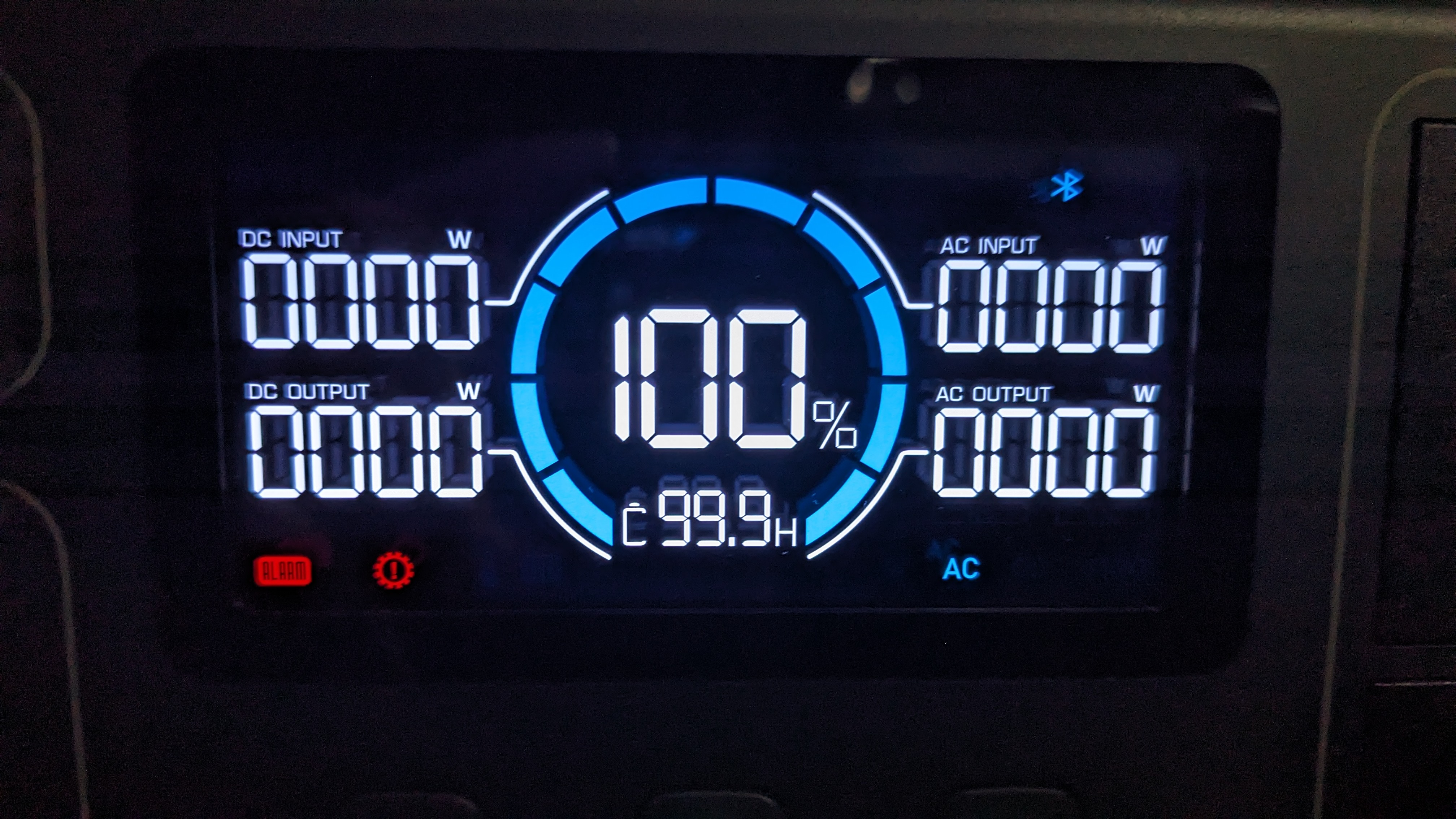[ad_1]
Portable power stations have become an essential item for homes and businesses, providing a back-up power solution for charging and powering a massive range of devices.
The Bluetti AC70 is a smart portable power station chiefly designed for homes, home offices, and on the road. This model boasts a 1000W pure sine wave inverter, making it better suited to lower-powered devices – think laptops, phones, other home office essentials – with a 2000W Power Lifting Mode for higher-powered household appliances.
We’ve tested out a number of the best portable power stations, and having been impressed with previous Bluetti models, we were keen to see how the new AC70 compares.
Bluetti AC70: Pricing & availability
The Bluetti AC70 is available worldwide, with an RRP of $699 / £699. However, at the time of review, it was on sale for $499 / £649. This does place the AC70 at the mid-to-high end of the spectrum for a power station of this type.
You can find the AC70 on the official Bluetti site, Amazon, and most electrical retailers.
Bluetti AC70: Design & features

Specs
What’s in the box: 1x Bluetti AC70, 1x mains charger, 1x cigarette lighter charger, 1x solar panel charging cable, 1x grounding screw
Battery capacity: 768Wh
Output: 1000W / 2000W in Power Lifting Mode
Inverter: Pure Sine Wave
AC output: 2
DC output: 1
USB output: 4 (2x USB-A, 2x USB-C)
Weight: 22.5 lbs / 10.2kg
Dimensions: 12.4 × 8.2 × 10.1in / 314 × 209.5 × 255.8mm
The AC70 is a compact but weighty little box (it clocks in at 22.5lb / 10.2kg) – although transportation is made easier with the built-in handle. It’s all part of the same casing as the rest of the unit, and feels firm during transit. However, we were glad to set it down after a while.
Soft, curved edges and a dark gray coloring makes this feel smart and accessible – its presence not dominating, but subtle, suitable for a range of locations. Driving the unit is a 768Wh LiFePO battery, which is relatively small when it comes to power stations, but does keep things more portable.
On the front of the power station, you’ll find a bright, clear LCD screen and buttons for powering on the device and switching between AC and DC outputs. Pressing these together lets you access and navigate the settings menu. It’s simple enough, after some trial and plenty of error, although we recommend using the Bluetti app for managing the power station, especially if you’re in and out of settings. For example, by default the unit is set to the power-saving eco mode. According to the manual, this mode is best turned off when charging smaller devices like phones. We found it far quicker to hop into the app and make that change than fiddle in the on-device menus.
When it comes to connections, the Bluetti AC70 is well-rounded for general use. Beneath the power button are two USB-A and two USB-C ports. A DC output and cigarette lighter port, letting you charge up the power station from your vehicle, sit to the left. On the right are two AC outputs. Around the side, a grounding pole and an AC input to recharge the unit via mains. A solar panel charging cable is included in the box to draw power from Earth’s yellow sun, with solar panels available separately.
Bluetti AC70: Performance

In use, the Bluetti AC70 portable power station works exactly as intended. Quietly powering our devices, turning the screen off after a minute, and generally being as unobtrusive as possible through our testing process. It’s worth checking the specs for any high-energy device you connect here. For example, our standard UK kettle (average 3000W) wouldn’t work even in Power Lifting Mode, which increases the power station’s reach to 2000W. Impressive technology, but hardly a game-changer compared to many we’ve tried.
That makes it a fairly low-level portable power station for more casual everyday use. In this regard, we had no issues at all, with the AC70 easily handling all devices within the 1000W range without any issue at all. Phones, battery chargers, laptops, lamps all worked instantly via AC and USB (DC) connections. However, if you use this for camping trips, you’ll want to store it somewhere safe and dry – keep it in the van. While the sockets do have rubber caps to protect from water and dust, the unit itself has no MIL-STD or IP ratings to complement the lifestyle of more rugged adventurers and road warriors.
For extra utility, the AC70 also boasts turbo charging when plugged into the mains. Documentation states the unit charges to 80% in forty-five minutes, and full charge in 1.5 hours in this mode. In our own tests, this was broadly accurate. You can switch between Standard, Turbo, and Silent charging modes in the app, and even charging on standard mode, it took the device from 33% to 75% in forty-five minutes. So, you won’t have to wait long to put the power station to use, whatever charging mode you use. We checked and the AC70 also supports pass-through charging, powering devices while you charge or run the unit off the mains.
You control this, and much more, within a beautifully designed app. It’s incredibly easy to navigate and find what you need, with a series of taps and toggles for controlling pretty much every feature, from Power Lifting and Eco Mode to Grid Self-adaption, an option that lets you continue a steady charging rate even during electrical spikes and volatility. Connecting the device to the app took us seconds after signing up, with any changes made in the app immediately reflected on the AC70’s screen.
Bluetti AC70: Final verdict

The Bluetti AC70 is a solid portable power station ideal for household use and the van-life – although in this regard, it’s likely best as a secondary or tertiary back-up unit, given its lower wattage output. Capable of powering most everyday devices, such as laptops and phones, it works very well, with a range of charging options and minimal fuss for those who just want to charge up devices on the go. For us, the companion app was a real highlight. Using this was absolutely seamless, giving you as much (or as little) control over the AC70 as you need.
It’s not perfect – what is? – and certain users are going to find the power output simply too low, the battery too small for their needs. But then, this isn’t designed for high-capacity or industrial use. If your needs are smaller, then it’s a very nice unit, with a pleasing design and construction that, while heavy, remains highly portable for solo users.
Should I buy?
[ad_2]
Source Article Link

